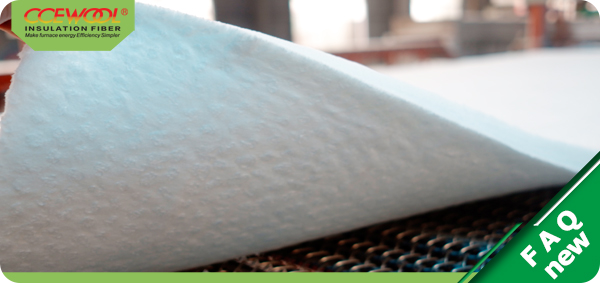Ceramic fiber, as a high-performance insulation material, is widely favored across various industries due to its exceptional properties. While ceramic fiber has many advantages, it also has some drawbacks that need attention. This article will explore the disadvantages of ceramic fiber while highlighting its advantages, helping you gain a comprehensive understanding of this material.
Disadvantages of Ceramic Fiber
Dust Issues
When installing and handling ceramic fiber, it can easily produce dust. These fine fiber particles, if inhaled, may irritate the respiratory system. Therefore, proper protective measures, such as wearing masks and using ventilation equipment, must be taken when working with ceramic fiber materials.
Lower Mechanical Strength
Although ceramic fiber maintains structural stability at high temperatures, its mechanical strength is relatively weak. It can easily break or wear out when subjected to impact or friction. Therefore, in applications requiring high mechanical strength, ceramic fiber may not perform as well as other materials.
Higher Production Costs
Compared to traditional insulation materials, ceramic fiber has higher production costs. This is mainly due to its complex manufacturing process and the high purity of raw materials required. However, its outstanding performance often brings long-term economic benefits.
Advantages of Ceramic Fiber
Despite the above-mentioned disadvantages, the advantages of ceramic fiber remain significant, making it the preferred insulation material in many industries.
Exceptional High-Temperature Performance
Ceramic fiber can maintain its structure and performance stability in high-temperature environments, with a typical temperature range of 1000℃ to 1600℃. Unlike traditional insulation materials, ceramic fiber does not easily deform or melt at high temperatures, ensuring long-lasting insulation effectiveness.
Low Thermal Conductivity
Ceramic fiber has an extremely low thermal conductivity, effectively preventing heat transfer and providing excellent thermal insulation. In high-temperature industrial equipment and building insulation, using ceramic fiber can significantly reduce energy loss and improve energy efficiency.
Excellent Thermal Stability
In rapid heating and cooling cycles, ceramic fiber exhibits excellent thermal stability and does not crack or break due to sudden temperature changes. This makes it particularly suitable for insulating high-temperature kilns, heaters, and other high-temperature equipment.
Lightweight
Ceramic fiber materials are lightweight, making them easy to install and handle. This reduces the overall weight of buildings and equipment, thereby lowering structural load and transportation costs.
Excellent Chemical Corrosion Resistance
Ceramic fiber has excellent resistance to most chemicals, making it highly effective in harsh environments of industries such as chemical and petrochemical, where it can maintain stable insulation performance over the long term.
Application Areas
Ceramic fiber, with its outstanding insulation performance, is widely used in various industries:
Industrial Furnaces: Used for linings and insulation layers to improve the thermal efficiency of furnaces and reduce energy consumption.
Building Insulation: Used as insulation material for walls and roofs in high-rise buildings and large public facilities, providing a comfortable indoor environment.
Petrochemical Industry: Used for insulating high-temperature pipelines and reactors to ensure the safety and stability of production processes.
Power Equipment: Used as insulation material in power transformers and electric motors, enhancing the safety and reliability of the equipment.
While ceramic fiber has some drawbacks, such as dust issues, lower mechanical strength, and higher production costs, its exceptional insulation performance, high-temperature resistance, and chemical corrosion resistance make it widely popular in many fields. Choosing ceramic fiber as an insulation material can not only improve the energy efficiency of equipment and buildings but also effectively extend their service life. Whether in industrial applications or daily life, ceramic fiber shows irreplaceable advantages and is the ideal choice for achieving efficient insulation.
Post time: Aug-12-2024


